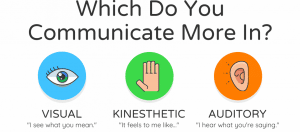Providing A Safe Learning Environment For Improved Literacy Outcomes
We are a diverse society with an equally diverse learning population. Students arrive at school with varying degrees of knowledge and capabilities. Providing a safe learning environment is the first step in laying a solid educational foundation.
As any kindergarten teacher can tell you, some students walk in on the first day with the ability to read while others have never seen a letter. Some students can add, subtract and multiply numbers, while others have not yet learned to count.
Teachers are tasked with meeting all students where they are at and helping them grow and achieve their goals. This learning journey can be fraught with obstacles and hurdles depending on the individual student. The importance of a safe learning environment cannot be understated in welcoming love of education.

Self-awareness can limit participation
In 2017, UIS reported that 617 million American primary and elementary students did not reach grade-level proficiency in reading and mathematics.
It has become increasingly clear that a student’s self-awareness of where they academically compare to classmates plays a role in participation during instruction periods.
This awareness can be a barrier to that student’s freedom to explore freely in the academic setting. They do not want to lack the skills and confidence when they compare themselves to their peers.
So the question becomes: How can we break down these barriers and provide a safe learning environment where they feel comfortable so that they thrive?
One of the most important actions that a teacher can do is to create a risk-free learning environment.
“Every child has a different learning style and pace. Each child is unique, not only capable of learning but capable of succeeding.” – Robert John Meehan
Risk-free learning removes literacy barriers
Risk-free learning allows students the ability to learn without fear or anxiety in a safe learning environment. They are able to succeed because they are provided with the opportunity to learn at their own pace.
This type of learning environment removes pressure from the students, allowing them to explore concepts and expand their knowledge.
How PIM provides a safe learning environment
Phonics in Motion introduces, practices, and teaches literacy skills through daily lessons that are interactive, authentic, and engaging for students.
Phonics in Motion provides a safe learning environment that reaches the diversity of learners in many ways. The lessons are conducted in a group environment which allows students to practice skills and learn new ones. The use of KMPs provides students with the ability to link sounds to letters in an authentic and meaningful way.
Because this is a group lesson, students do not feel singled out and are able to practice, learn, and implement the skills that are being taught. Students who already possess these skills are able to participate in solidifying, practicing, and expanding knowledge.
PIM creates a safe learning environment for all students
The activities included in the lessons are fun and engaging for young learners, creating a safe learning environment. Young children learn through movement and play. When students are actively engaged and interacting with a concept through motion, their ability to retain and implement the information is increased.
If you’re a teacher or administrator interested in learning more about how to incorporate the Phonics in Motion system into your classroom or school, visit our website at www.phonicsinmotion.com/store







